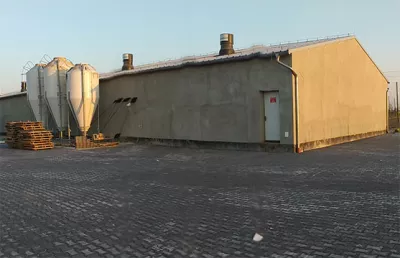General information
RDP Priority
- P2. Competitiveness
RDP Focus Area
- 2A: Farm’s performance, restructuring & modernisation
RDP Measure
- M04: Investments in physical assets
Beneficiary type
- Farmer / land manager
Summary
The farmer of a mixed animal farm in Poland, Henryk Sieraszek, streamlined production and modernised his farm to focus on piglet production to stabilise the financial situation of his farm. The project aimed at expanding the scale and scope of operations to improve the profitability of the business. Project activities included the construction of a bedding-free pigsty, developing a sales and marketing strategy, research, training and involving the farm in a demonstration farm network. In addition to piglet production, fattened pigs' breeding was maintained. Expansion and additional revenues were successfully achieved and the farm is now available for group visits.
Results
- A modernised, fully operational building and a new bedding-free pigsty were constructed, including all relevant equipment for breeding.
- Increased sales income from over 6 000 piglets.
- Increased pig production with an average annual number of approximately 240 sows.
- Increased revenues from business activities.

Promoter
Henryk Sieraszek
Funding
Total budget: 2 505 462 (PLN)
RDP support: 900 000 (PLN)
Other sources: 1 605 462 (PLN)
Ressourcen
Documents
Good Practice Report - Modernisation of a piglet production farm
(PDF – 1.83 MB)
Context
Originally the animal farm, run by Henryk Sieraszek in Tatary in the north of Poland, involved the production of a small number of beef cattle and fattened pigs in a closed system. The farm area covered 50 hectares. While representing an average farm size in Poland, it did not generate sufficient income to continue this activity. Therefore, the farmer decided to focus exclusively on breeding and fattening pigs. In addition, he wanted to specialise in the production of piglets. Henryk was keen to prepare the transitioning process comprehensively and professionally. This involved research observations and experiments, which informed his plan to create suitable conditions for examining piglet production in terms of their development and with a particular interest in reducing antibiotic use.
The farm was a suitable candidate for inclusion in the demonstration farm system, which would thereby support the training of zootechnicians and foster the dissemination of knowledge.
Further plans included the on-farm production of animal feed to fulfil the farm’s needs self-sufficiently in future.
Objectives
The main objective of the project was to improve the farm’s income by supporting the owner in the necessary investments regarding the modernisation of the existing farm building and construction of a bedding-free pigsty for piglet breeding, including all required modern equipment.
The projects' further aims focused on improving sales and marketing approaches and preparing relevant sales plans.
In addition, the intention was to include the farm in the network of demonstration farms in Poland, thereby creating conditions for conducting research and training, as well as opening the farm to interested visitors.
Activities
The project activities commenced with analysing the sales market for piglet production to ensure the farm’s future profitability. In addition, documentation needed to be prepared involving assessing the various options for modernising the existing building and implementing the new investment plans. This informed the preparation of an application for financing from the Polish Agency of Restructuring and Modernisation of Agriculture, along with all required documentation. In addition, all necessary building permits and other permits were obtained.
The project's implementation involved modernising the existing building and constructing a new litter-free pigsty. Further activities included procuring, purchasing, and installing all necessary devices and building equipment.
Finally, all procedures to include the farm in the network of demonstration farms were undertaken.
Main results
- All project activities relating to the modernisation and transformation of the farm in terms of construction and equipment purchases were successfully carried out in line with the project’s aspirations. The farm started its piglet production and training for zootechnicians and organised demonstration shows for study groups. Relevant research was carried out to reduce the use of antibiotics.
- A modernised, fully operational building and a new bedding-free pigsty were constructed, including all relevant breeding equipment.
- Increased sales income from over 6 000 piglets.
- Increased pig production with an average annual number of approximately 240 sows.
- Increased revenues from business activities.
- Additional income was generated from conducting training and demonstrations.
- Increased connectivity and recognition of the farm through the network of demonstration farms.
- Production profitability reached a satisfactory level. However, due to high market volatility and many factors affecting breeding, it was difficult to estimate the specific profit precisely.
Key lessons
- Good planning and preparation increase the likelihood of achieving project goals.
- The project facilitated positive change through the implementation of a new farm operating model. Based on the experience gained, the investment project was a good move as it was based on a clearly defined plan that ensured a systematic implementation and an efficient scaling up of production. The construction of a modern facility also improved work on the farm and fostered business growth, including cyclical and long-term contracting, thereby improving and stabilising the business's financial situation.
- The development of new services, such as conducting zoological research, training, demonstrations and disseminating experience, added an income stream to basic farm production. Integral to the new service provision, the beneficiary also benefited from knowledge exchange with specialists and training participants.
Being primarily engaged in piglet production, I do not focus on breeding and sales only, but by conducting research, training and demonstrations, I feel that my activity is more complete and serves to expand and exchange knowledge in this area.
Contact Information
Tel: +48 504232663
